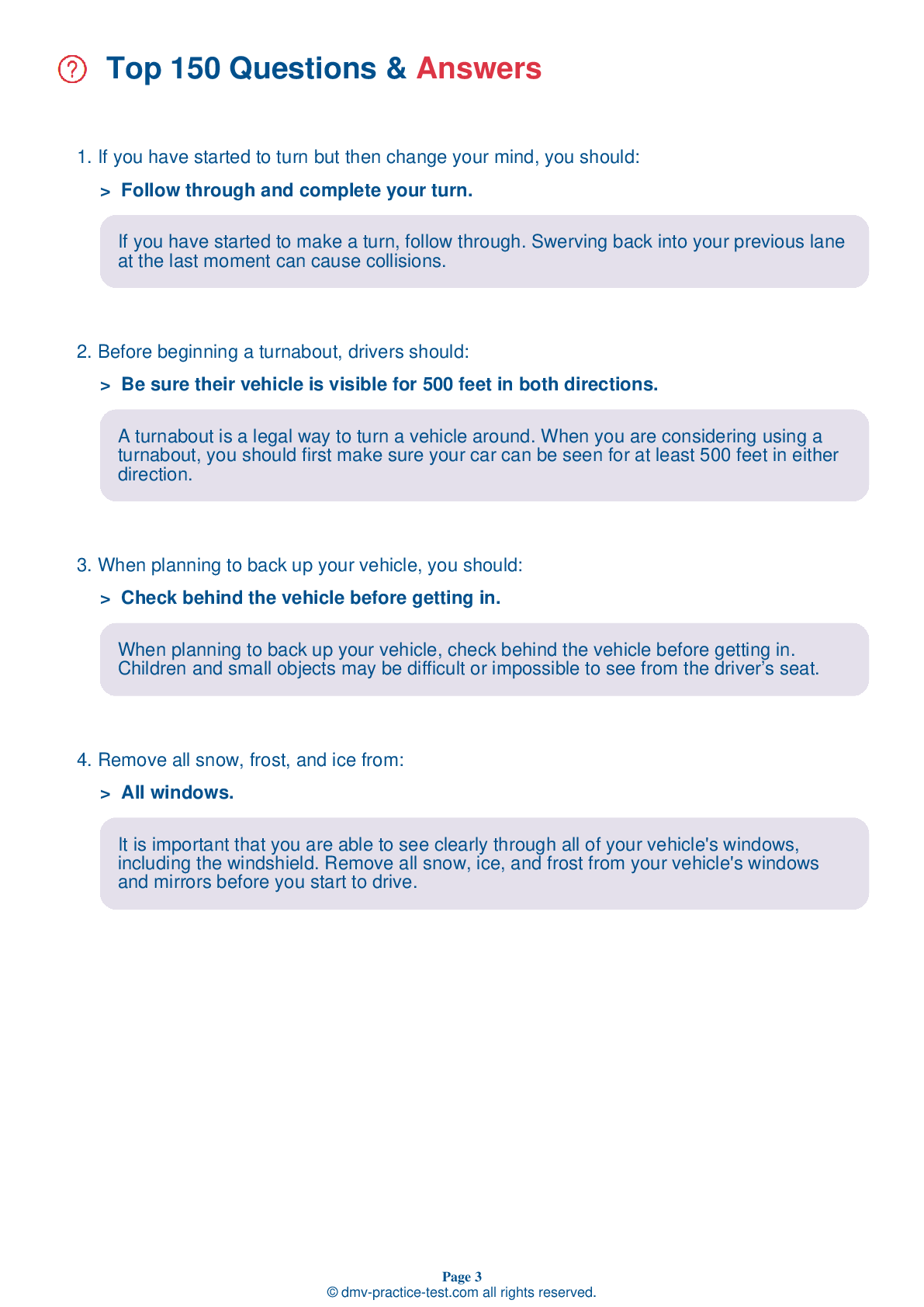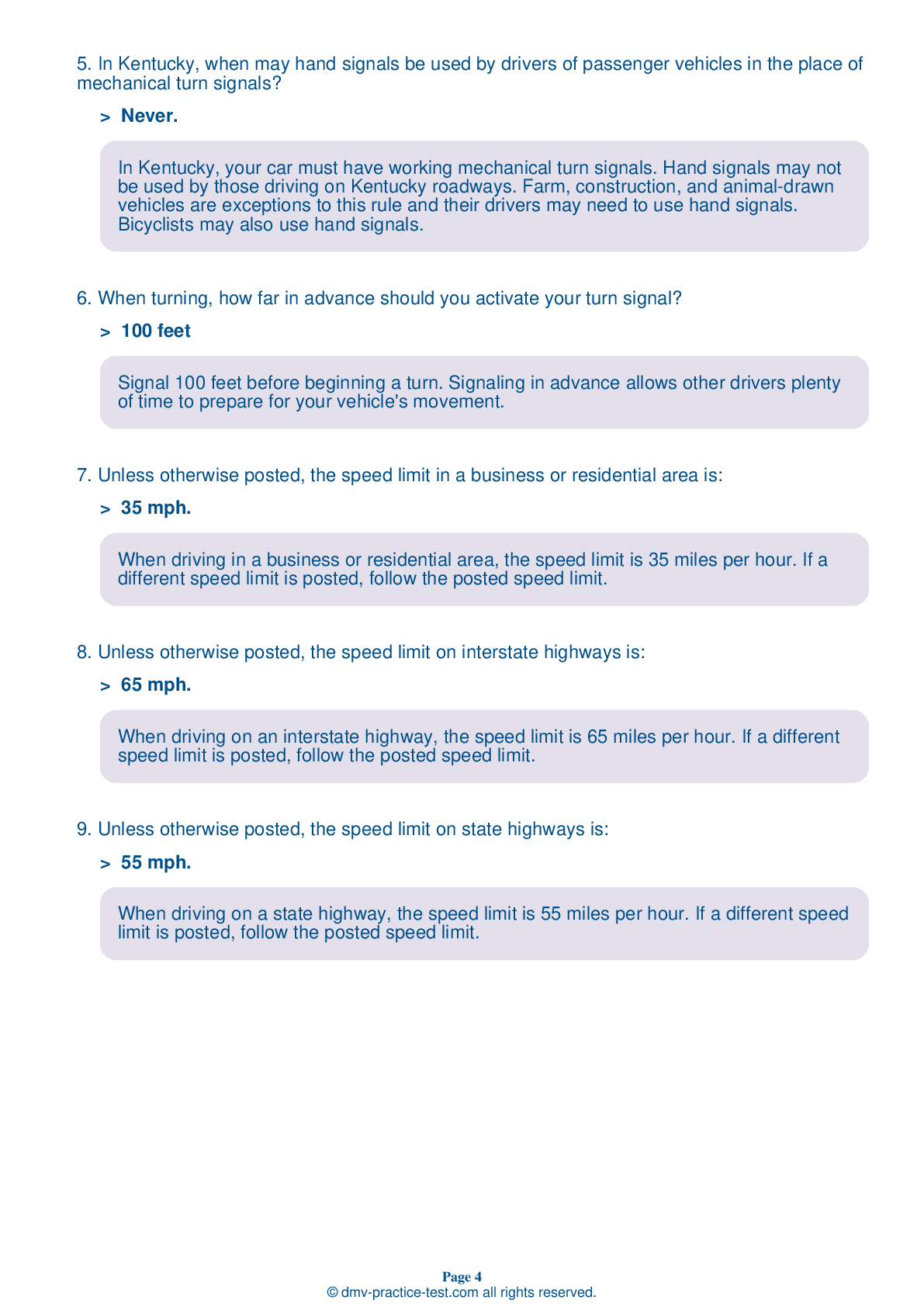FREE Kentucky DMV Practice Test #1
The DMV practise tests in Kentucky have been updated for January 2025. It comprises questions based on the most important traffic signals and laws for 2025 from the KentuckyDriver Handbook. To study for the DMV driving permit test and driver's licence exam, use actual questions that are very similar (often identical!) to the DMV driving permit test and driver's licence exam.
Each question on the practise exam has a tip and explanation to help you recall the ideas. Questions about traffic rules, traffic signs, and driving statutes, as well as knowledge from the Driver Handbook, will be included in the written portion of the official Kentucky DMV test.
You must properly answer 32 of the 40 questions to receive a passing mark. To help you prepare for your Kentucky instruction permit or driver's licence, take our DMV practise test.
The DMV exam is offered in a variety of languages.
Using any form of testing help will result in an automatic fail, and the DMV may take further action against your driver's licence, so avoid it.
1 . It is dangerous to follow a motorcycle too closely because:
Motorcycles can stop quickly and following them too closely endangers your life and that of the motorcyclist. If the motorcyclist makes a mistake, you need to have enough time and space to avoid a crash.
2 . Only ____ can reduce blood alcohol content (BAC) and alcohol's effects on the body.
Only the passage of time can remove alcohol and its impairing effects from the body.
3 . You are involved in a minor collision at an intersection. There are no injuries and there is very little vehicle damage. You should:
After a collision, if no one has been injured or killed and you can safely do so, you should move your vehicle out of the traffic lane.
4 . A steady green traffic light at an intersection means:
A steady green traffic light indicates that the driver may continue through the intersection. The driver should yield to traffic or pedestrians already in the intersection and proceed when the intersection is clear.
5 . A broken yellow line between two lanes of traffic means:
Dashed yellow lines separate single lanes of traffic moving in opposite directions. Passing is allowed when there is no oncoming traffic in the passing lane.
6 . If you are being followed too closely on a two-lane road:
If you are being followed too closely by another driver, merge into a different lane. If there is no lane available for merging, wait until the road ahead is clear and slowly reduce your speed. This will encourage the tailgater to drive around you.
7 . This sign means:

Where this sign is posted, it is prohibited to make a right turn. It would be unsafe and unlawful to make a right turn at an intersection with this sign.
8 . When turning left at an intersection:
Drivers making left turns must yield to oncoming traffic that is traveling straight. Drivers must always yield to pedestrians.
Need Car Insurance? No problem!
Compare the best rates in Kentucky and find a personalized policy that meets your needs.
1. Are You Currently insured ?
2. Married ?
3. Do you own your Home?
4. Do you have more than 1 car ?
5. Have you or a Family Member Honorably Served in U.S. Military ?
6. Your Name
7. Age
8. Zip code
IMPORTANT REMINDER:Auto Insurance is Mandatory to drive in Kentucky. Get covered before you hit the road to avoid any fines.
Ranked by best match



